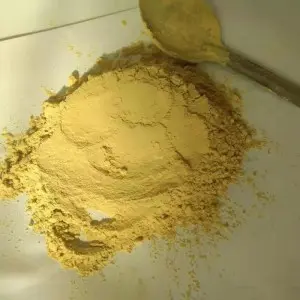Nov . 28, 2024 11:39 Back to list
Wholesale Pollination Strategies for Optimizing Kiwifruit Yield in Orchards
The Importance of Wholesale Pollination for Kiwifruit Orchards
Kiwifruit, known for its unique flavor and vibrant green color, has firmly established itself as a major player in the global fruit market. With increasing demand, kiwifruit growers are continuously exploring methods to enhance yield and quality. One crucial factor that significantly influences the success of kiwifruit production is effective pollination, primarily achieved through the wholesale use of pollen.
Pollination is the process by which pollen grains from the male flower fertilize the ovules of the female flower. Kiwifruit, specifically the Actinidia deliciosa species, is dioecious, meaning that individual plants are either male or female. This reproductive strategy necessitates the need for both types of plants in proximity to each other for successful fruit set. However, the natural pollination can be unpredictable, influenced by factors such as weather, insect activity, and the abundance of compatible male plants. As a solution to these challenges, wholesale pollination via the dispersal of pollen has emerged as an innovative technique that boosts fruit production and quality.
The process of wholesale pollination involves the collection and distribution of high-quality pollen from male kiwifruit flowers to fertilize female flowers. This method offers several advantages. Firstly, it ensures a consistent supply of pollen, reducing the dependency on insect pollinators such as bees, which may not always be present in sufficient numbers. Furthermore, commercial pollen collection allows farmers to select and use the best-performing male plants, thus improving the genetic quality of the fruit produced.
wholesale pollination pollen of kiwifruit in orchard

To maximize yield, orchard managers often strategically time the application of pollen to coincide with the flowering period of female plants. This requires careful monitoring of the flowering stages and environmental conditions. By using specially designed pollen applicators, growers can efficiently distribute pollen across large orchard areas, ensuring even coverage and maximizing the chances of successful fertilization.
Studies have shown that orchards utilizing wholesale pollination methods see a marked increase in fruit set and overall yield. For instance, orchards that employed targeted pollen application experienced up to a 30% increase in fruit production compared to those relying solely on natural pollination. Additionally, the quality of the fruit, including size and sweetness, often improves, leading to better market prices.
However, implementing wholesale pollination isn’t without its challenges. It requires an initial investment in pollen collection, storage, and application technology. Growers must also understand the specific pollen collection process, ensuring that the pollen remains viable and effective at the time of application. Furthermore, there is a necessity for ongoing research into pollen genetics to optimize the selection of male plants for pollen production.
In conclusion, wholesale pollination through the strategic distribution of kiwifruit pollen presents a promising avenue for enhancing orchard productivity. As global demand for kiwifruit continues to grow, embracing this technique will be vital for orchardists seeking to meet market needs. With proper planning, investment, and ongoing innovation, wholesale pollination can transform the kiwifruit industry, ensuring that consumers enjoy the delectable and nutritious fruit for years to come. As the agricultural landscape evolves, it is clear that effective pollination strategies will play a critical role in sustaining fruit production and supporting the livelihoods of thousands of growers worldwide.
-
Artificial Pollination Solutions for All Plant Pollen Types
NewsJul.29,2025
-
Premium Plant Pollen for Pure Pollination & Pollen Block Solutions
NewsJul.29,2025
-
Artificial Pollination Solutions for Efficient Crop Yields
NewsJul.28,2025
-
Premium Cherry Pollen for Pure Pollination & Different Types of Pollen
NewsJul.28,2025
-
Eco-friendly Fruit Paper Bags with Pollen Block Technology
NewsJul.26,2025
-
Premium Kiwi Pollen for Sale – Fresh Male Kiwi Pollen Supplier
NewsJul.25,2025